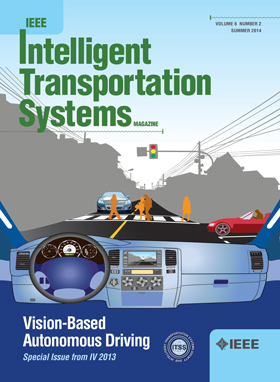物理世界中针对目标探测器的高度可转移伪装攻击
IF 8.4
1区 工程技术
Q1 ENGINEERING, CIVIL
IEEE Transactions on Intelligent Transportation Systems
Pub Date : 2025-04-15
DOI:10.1109/TITS.2025.3553847
引用次数: 0
摘要
为了评估深度神经网络在物理世界中的脆弱性,近年来许多研究引入了对抗性示例,并将其应用于计算机视觉任务,如目标检测。与基于补丁的对抗性攻击相比,基于伪装的攻击由于能够从多个视点攻击探测器而受到越来越多的关注。然而,现有的对抗性示例通常依赖于玻璃盒模型,并且表现出有限的可移植性到闭盒模型,这仍然是一个重大挑战。为了解决这个问题,我们提出了高度可转移的伪装攻击,这是一种新的物理对抗性攻击框架,旨在生成鲁棒和有效的对抗性伪装,可以在不同的场景中误导目标探测器。具体来说,我们引入了一种分散方法来在模型之间分配注意图的特征,并提出了增强迁移策略,通过增加输入数据和被攻击模型来提高对抗迁移能力。大量实验表明,我们的高可转移伪装攻击可以有效地误导数字和物理世界中的目标探测器,增强对抗伪装在多个主流探测器上的可转移性。本文章由计算机程序翻译,如有差异,请以英文原文为准。
A Highly Transferable Camouflage Attack Against Object Detectors in the Physical World
To assess the vulnerability of deep neural networks in the physical world, many studies have introduced adversarial examples and applied them to computer vision tasks such as object detection in recent years. Compared to patch-based adversarial attacks, camouflage-based attacks have received more and more attention due to their ability to attack detectors from multiple viewpoints. However, existing adversarial examples often rely on glass-box models and exhibit limited transferability to closed-box models, which remains a significant challenge. To address this issue, we propose the highly transferable camouflage attack, a novel physical adversarial attack framework designed to generate robust and efficient adversarial camouflage that can mislead object detectors in diverse scenarios. Specifically, we introduce a distraction method to distribute the features of the attention map between models, and propose enhanced transfer strategies to improve adversarial transferability through augmenting the input data and the attacked models. Extensive experiments demonstrate that our highly transferable camouflage attack can effectively mislead object detectors in both digital and physical worlds, enhancing the transferability of adversarial camouflage on multiple mainstream detectors.
求助全文
通过发布文献求助,成功后即可免费获取论文全文。
去求助
来源期刊

IEEE Transactions on Intelligent Transportation Systems
工程技术-工程:电子与电气
CiteScore
14.80
自引率
12.90%
发文量
1872
审稿时长
7.5 months
期刊介绍:
The theoretical, experimental and operational aspects of electrical and electronics engineering and information technologies as applied to Intelligent Transportation Systems (ITS). Intelligent Transportation Systems are defined as those systems utilizing synergistic technologies and systems engineering concepts to develop and improve transportation systems of all kinds. The scope of this interdisciplinary activity includes the promotion, consolidation and coordination of ITS technical activities among IEEE entities, and providing a focus for cooperative activities, both internally and externally.
 求助内容:
求助内容: 应助结果提醒方式:
应助结果提醒方式:


